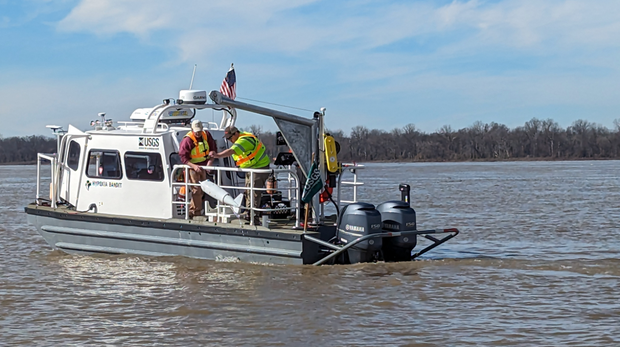Nearly 6,000 square miles – an area roughly the size of Connecticut – will become a “dead zone“for marine life in the Gulf of Mexico this summer, the National Oceanic and Atmospheric Administration (NOAA) warned Thursday. While such patches occur every summer, this year’s will be more than 600 square miles larger than average.
Dead zones are areas in the water where oxygen levels are so low that they can kill fish and other marine life. These zones typically arise due to excessive nutrient pollution caused by human activities, NOAA said. The average dead zone over the past 37 years has measured about 5,200 square miles, but this year’s is estimated at about 5,827 square miles.
O largest dead zone ever recorded in the Gulf it was nearly 9,000 square miles — about the size of New Jersey — and came into existence in 2017. When it did, videos showed the water turning so dark that divers needed flashlights to look around.
The estimate comes after the U.S. Geological Survey found about 5% more discharge in the Mississippi and Atchafalaya rivers than the long-term average in May. Nitrate and phosphorus contribute to algal blooms, and in May these loads were 7% and 22% above long-term averages, respectively.
USGS
These nutrients, although necessary in some quantities, can burden the environment. According to Carleton College’s Science Education Resource Center, runoff filled with fertilizers, soil erosion, animal waste, and sewage ends up in the aforementioned rivers.
“In a natural system, these nutrients are not significant factors in algal growth because they are depleted in the soil by plants. However, with the anthropogenic increase in nitrogen and phosphorus input, algae growth is no longer limited,” says the college. “Consequently, algal blooms develop, the food chain is altered, and the dissolved oxygen in the area is depleted.”
When this happens, it forces many animals, such as fish and shrimp, to leave the area, potentially killing organisms that cannot leave. When dead zones are particularly large, they can wreak havoc on fishermen and coastal economies, Carleton College researchers say, as the Gulf provides nearly three-quarters of the country’s shrimp caught. The Gulf also supplies 66% of harvested oysters and 16% of commercial fish.
USGS Lower Mississippi Gulf Water Science Center
“Reducing the impact of hypoxic events and decreasing the occurrence and intensity of future dead zones continues to be a NOAA priority,” said National Ocean Service Assistant Administrator Nicole LeBoeuf. “These forecasts are designed to provide crucial data to scientists, coastal managers and communities, and are used as guides in developing planning actions.”
Reducing runoff is essential to minimize the dead zone.
O National Wildlife Federation said adopting better agricultural practices, such as planting cover crops and reducing drainage from farm fields into rivers, as well as filling floodplains with wetlands to filter nutrients, can be valuable ways to manage the problem. .
mae png
giga loterias
uol pro mail
pro brazilian
camisas growth
700 euro em reais
























